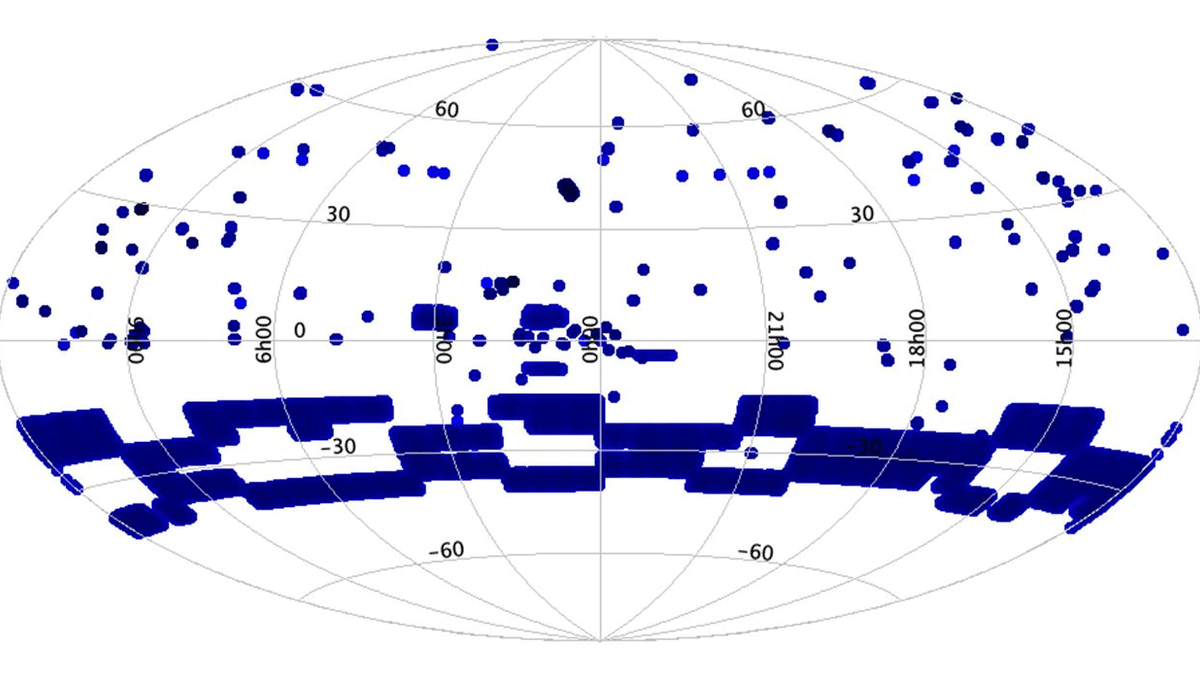
An expansion of the Search for Extra-Terrestrial Intelligence (SETI) program means that for the first time, humanity is starting to collect a substantial sample of the radio universe for this purpose, thanks to advances in detection equipment.
Despite occasional flutters of excitement, none of our scanning of the skies has turned up evidence of alien civilizations. However, radio astronomers stress that this doesn’t prove there’s no truth out there to find. A commonly used analogy is someone who takes a single bucketful of water from the ocean, finds no fish in it, and therefore concludes fish do not exist.
Our historic sampling is equivalently small. If aliens were even one percent of the way across the galaxy and sending out as many radio and TV signals as we are, it’s very unlikely we would have detected them – even if they’d been doing it long enough for the signals to reach Earth.
A new, much larger, bucket may now change that. Known as Commensal Open-Source Multimode Interferometer Cluster (COSMIC), the new detector is linked to the Karl G Jansky Very Large Array (VLA), which featured as the alien-hunting site in the film Contact.
“COSMIC introduces modern Ethernet-based digital architecture on the VLA, allowing for a test bed for future technologies as we move into the next generation era,” said project scientist Dr Chenoa Tremblay in a statement.
Extraterrestrial radio signals can be sought either through scanning wide areas of the sky, or by pinpointing what are considered promising candidates. However, with the technology we have had up until now, neither has been very satisfying.
Broad surveys have only been able to detect very powerful signals – the sort we might get if aliens were blasting deliberate messages straight at us at the right frequency, but not the leakage from their general chatter. Picking specific targets means knowing where to look, and that requires knowledge we don’t have. Even the planet considered “the best place to look for life outside the Solar System” might not even be a rocky planet like our own. Recent research indicates it’s more likely either a gaseous sub-Neptune hostile to life, or a water world with large barriers to technology. The other planets we know of are less promising still.
Two previous efforts, Project Phoenix and Breakthrough Listen, targeted 1,000-2,000 stars – but even then could only cover limited parts of the spectrum (initially 1-4 GHz, although recently this has broadened somewhat). Now, however, the SETI Institute is expanding a thousand-fold.
COSMIC is designed to allow us to greatly expand our range so we don’t have to be so picky. “Currently, the focus is on creating one of the largest surveys for technological signals, with over 500,000 sources observed in the first six months,” Tremblay said. She added the same technology will allow us to do many things unrelated to the search for life, like looking for dark matter candidates or the causes of fast radio bursts.
COSMIC doesn’t require larger dishes or more sensitive antennae. Instead, it enables the processing of signals that have been effectively wasted. COSMIC collects and processes data that might contain technosignatures at the same time as researchers are using the radio telescope for other things.
Because the data is handled in real-time, instead of weeks or years later as has happened previously, there are opportunities to go back and look at anything promising before it disappears.
Natural radio emissions can almost always be seen over a wide range of frequencies, while those that humans produce are usually quite narrow to avoid interference and wasting energy. SETI has usually operated by seeking signals restricted to narrow wavelengths on the assumption aliens would follow similar rules, and COSMIC is no exception.
“COSMIC executes a search targeting narrowband (Hz-scale) emissions and produces small ‘postage stamp’ raw voltage files for each antenna around signals of interest,” Tremblay and co-authors of a new paper write; “Employing a cluster of CPU/GPU compute nodes, COSMIC processes data in real time to look for signs of technosignatures within our Galaxy from the directions of our nearest stars.”
Consequently, they add, “We predict that over 10 million stars could be observed within a few years, which is orders of magnitude greater than the scope of the entire current history of radio technosignature searches.”
A description of COSMIC and its potential is published open access in the Astronomical Journal.
Source Link: SETI Is Checking Millions Of Stars For Signs Of Life